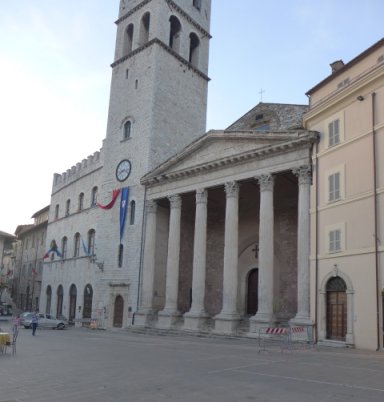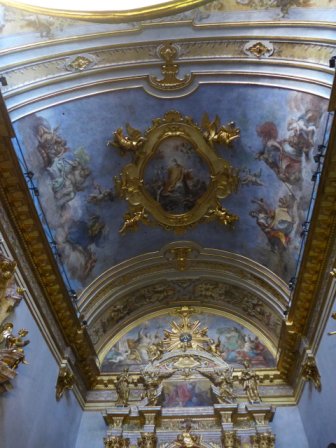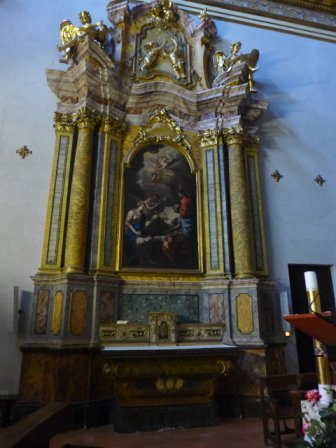|
Santa Maria sopra Minerva |
|||
One of the most complete Roman buildings in Italy. It was much admired by Goethe on his visit, as described in his Italian Journey: 'There, before my eyes, stood that celebrated monument, the first complete monument from antiquity I had ever seen. It is not a grand temple as would be expected for such a small town, and yet is is so perfect, so well conceived, that it would fit anywhere'. History The building dates from the first century BC, and tradition has it that it was dedicated to Minerva, though Castor and Pollux are contenders. It was converted into a church perhaps as early as the seventh century; it was dedicated to San Donato. In 1212 it ceased to be a church and was used for secular purposes, including a prison. An image of it is included in the thirteenth century frescoes in the Upper church of San Francesco. The prison's barred windows can be seen in the fresco; the angels may well have existed in an early version of the church. |
|||
|
|
|
||
|
In 1456 the building became a church once more, and in 1539 it acquired its present dedication. The church was extended and remodelled in the seventeenth and eighteenth centuries, giving it the baroque appearance as shown below. |
|||
|
|
|||
|
|
|
|
|
|
Assisi churches page 1 Sacred places home page Home page - explore the site |
|||




